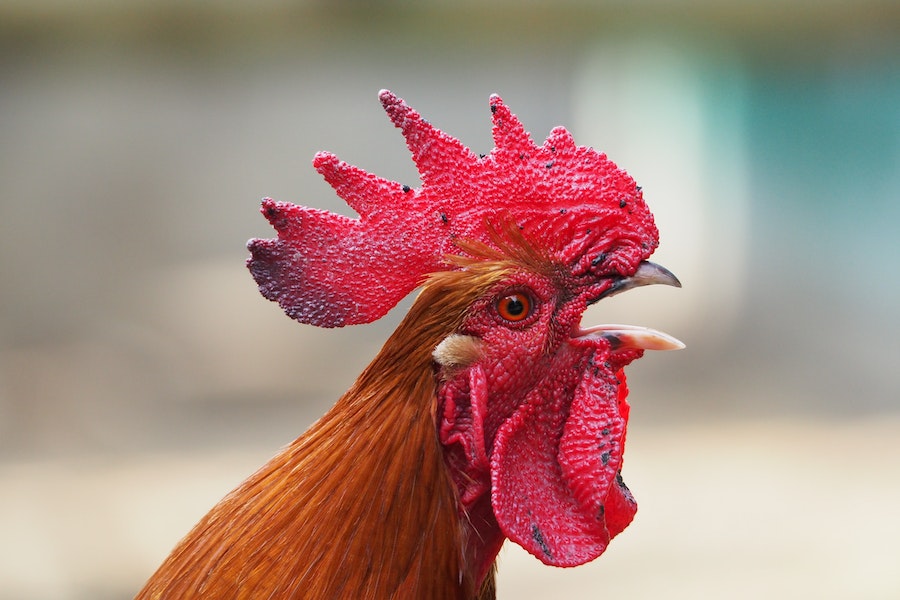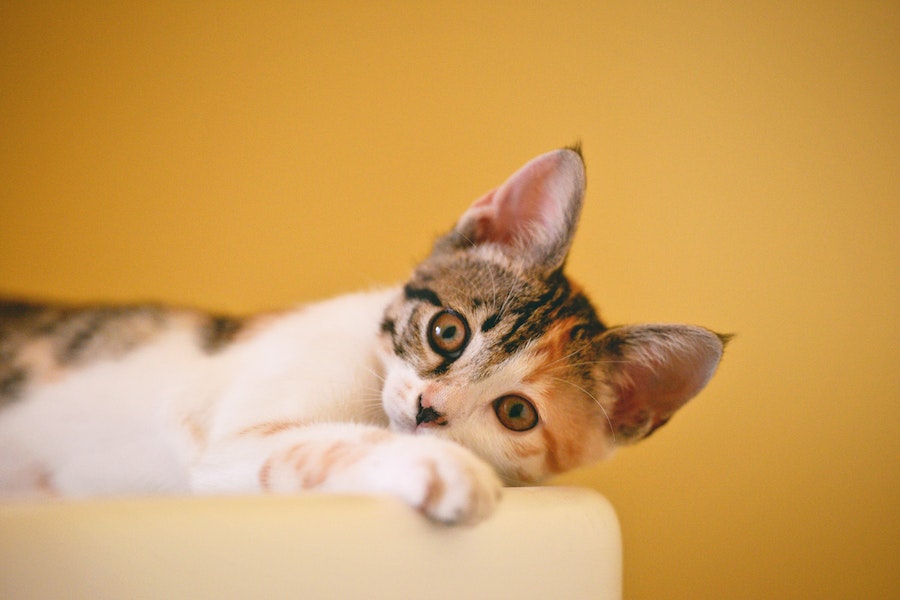Roosters, those iconic farmyard birds, are known far and wide for their distinctive vocalizations. But what sound does a rooster actually make, and why do they do it? In this article, we’ll delve into the world of rooster crowing, exploring the science behind their unique sounds, the reasons behind their crowing behavior, and the cultural significance of these feathered alarm clocks. Whether you’re a curious city dweller, a backyard poultry enthusiast, or simply someone intrigued by the avian world, join us on this cluck-tastic journey into the world of rooster sounds.
What Sound Does A Rooster Make?
Roosters make a distinctive sound often described as “cock-a-doodle-doo.” This crowing sound consists of a series of short, loud calls that typically start at dawn. The exact sound can vary slightly among different roosters and breeds, but it serves as a territorial and communicative signal, helping them establish dominance, announce their presence, and communicate with other chickens in the flock.
Why Do Roosters Crow?
Roosters crow for a variety of reasons, and their crowing serves multiple purposes in their daily lives. One primary reason is linked to their circadian rhythms. Roosters are known to crow at dawn, helping to mark the beginning of the day. This behavior is hardwired in their biology and helps synchronize the activities of the entire flock, ensuring they wake up and start their daily routines together.
Another crucial function of crowing is tied to territorial behavior. Roosters are territorial birds, and they use their crowing to establish and defend their territory. When a rooster crows, it sends a clear signal to other roosters in the area that this space is already claimed. It serves as a warning to potential intruders and can often deter rival roosters from encroaching.
Communication is yet another vital aspect of rooster crowing. Roosters use their distinctive calls to communicate with other members of the flock. They may crow to alert hens to food sources, announce potential threats, or call their flockmates together. In this way, crowing plays a crucial role in maintaining cohesion within the chicken group.
Finally, crowing also plays a role in reproductive signaling. When a rooster crows, it’s not just a wake-up call; it’s also a way for them to attract hens and establish dominance within the flock. The frequency, volume, and quality of a rooster’s crow can signal to hens about his health and vigor, influencing their choice of mate. In addition, dominant roosters often have more opportunities to mate, ensuring the survival of their genetic lineage.
Cultural And Symbolic Significance
- Roosters hold significant cultural and symbolic value in various societies around the world. Their symbolism transcends their role as farm animals, touching upon themes of folklore, religion, and cultural identity.
- In mythology and folklore, roosters are often associated with qualities like vigilance and courage. For instance, in Greek mythology, the rooster’s crowing was believed to announce the victory of light over darkness. In Chinese culture, the rooster is one of the twelve zodiac animals and symbolizes punctuality, fidelity, and protection.
- Roosters also have religious significance. In Christianity, the rooster is famously linked to the story of Peter’s denial of Jesus, with the crowing rooster symbolizing repentance and awakening. In Hinduism, the rooster is associated with Lord Indra and is considered a symbol of courage and valor.
- Furthermore, roosters appear in various art forms, literature, and traditions. They have been featured in paintings, sculptures, and literature across different cultures, often representing dawn, vitality, and awakening.
- In many countries, roosters serve as national symbols or emblems. For instance, the Gallic Rooster is a symbol of France, representing the French people’s spirit and courage. In Portugal, the Barcelos Rooster is a widely recognized symbol of luck, often depicted in ceramics and textiles.
- Roosters also play a role in folk traditions and superstitions. Their crowing is believed by some to bring good luck or ward off evil spirits. In some cultures, roosters are even used in divination practices.
Roosters’ Relationship With Humans
The relationship between roosters and humans is complex and multifaceted, with both practical and symbolic significance. Roosters have been domesticated by humans for thousands of years, primarily for their roles as alarm clocks, guardians of flocks, and sources of food. Here are key points to explore in an article on roosters’ relationship with humans:
- Historical Domestication: Discuss the history of rooster domestication, tracing it back to ancient civilizations. Highlight their value as early alarm clocks for farmers.
- Farm Guardians: Explain how roosters serve as protectors of the flock, sounding alarms in response to potential threats like predators.
- Role in Food Production: Explore the utilitarian aspect of roosters in the food industry, especially as sources of meat and eggs.
- Cultural Symbolism: Delve into the symbolic significance of roosters in different cultures and religions. Mention their presence in myths, folklore, and art.
- Pets and Backyard Flocks: Discuss the trend of keeping roosters as pets in urban and suburban settings. Highlight their social and sometimes affectionate interactions with humans.
- Challenges and Controversies: Address the challenges and controversies associated with roosters in urban areas, such as noise complaints and local regulations.
- Education and Awareness: Emphasize the importance of educating the public about responsible rooster ownership, welfare, and conservation efforts for heritage breeds.
- Rituals and Traditions: Explore how roosters play roles in rituals, ceremonies, and superstitions in various cultures.
Fun Facts About Roosters
Natural Timekeepers: Roosters have an internal sense of time, which often leads them to crow at the break of dawn. This natural timekeeping ability has made them popular as rural alarm clocks.
- Crow Variations: Roosters from different breeds and regions can have distinct crowing patterns and sounds. Some may be more melodious, while others can be quite raucous.
- No Snooze Button: Roosters are persistent when it comes to crowing. They can grow multiple times throughout the day, not just in the morning, and are known for their early wake-up calls.
- Weather Forecasters: Some folklore suggests that roosters can predict the weather. The idea is that they crow more before a change in atmospheric pressure, such as an approaching storm.
- Colorful Plumage: Roosters often sport vibrant and colorful plumage, which can vary between breeds. Their colorful feathers serve both functional and aesthetic purposes.
- Leftover Dinosaur Traits: Birds, including roosters, are believed to be descendants of dinosaurs. Some remnants of their dinosaur ancestry can be seen in the scales on their legs.
- Multi-Language Crowing: In multilingual countries, roosters have different names for their crowing sound. For example, in Japan, it’s “kokekokkō,” while in France, it’s “cocorico.”
- Diverse Breeds: There are hundreds of rooster breeds worldwide, each with its own unique characteristics, from the imposing and large Brahmas to the petite and colorful Seramas.
Conclusion
In conclusion, the rooster’s crow is a global phenomenon that transcends borders, cultures, and languages. Its interpretation and mimicry vary widely, showcasing the rich diversity of human expressions and linguistic nuances. From “cock-a-doodle-doo” in English to “cocorico” in French and “kikirikí” in Spanish, these representations reflect the deep connections between humans and nature. The rooster’s crow serves not only as an alarm clock but also as a symbol of cultural identity, folklore, and linguistic creativity, reminding us of the universal fascination with these feathered heralds of the dawn.
FAQs
Why Do Roosters Crow So Early In The Morning?
Roosters are naturally programmed to crow at dawn. It’s part of their biological clock. Crowing at dawn helps synchronize the activities of the flock and serves as a territorial signal to establish their presence.
Can You Tell The Gender Of A Chick By Its Crowing?
No, you cannot determine the gender of a chick by its crowing. Both male and female chicks can make similar chirping sounds when they are young. Roosters usually start crowing when they reach sexual maturity, around 4-5 months of age.
Do All Roosters Crow, And Do They Do It Every Day?
Not all roosters crow, but it’s a common behavior among males. The frequency of crowing can vary between individuals and breeds. While they often crow at dawn, they can also crow throughout the day for various reasons, such as when they perceive a threat or want to communicate with the flock.
Why Do Roosters Fight Each Other?
Roosters fight as a part of establishing and maintaining dominance within the flock. This behavior is a natural instinct, and fights can occur over territory, access to hens, or social hierarchy. Keeping multiple roosters in the same flock may increase the likelihood of fights.
Can You Train A Rooster Not To Crow?
It is challenging to train a rooster not to crow, as crowing is an innate behavior. Some methods, like keeping them in a darkened coop at night or using crow collars, may reduce the volume of their crowing, but they are not foolproof. It’s essential to consider local regulations and the welfare of the rooster when attempting to mitigate crowing.








